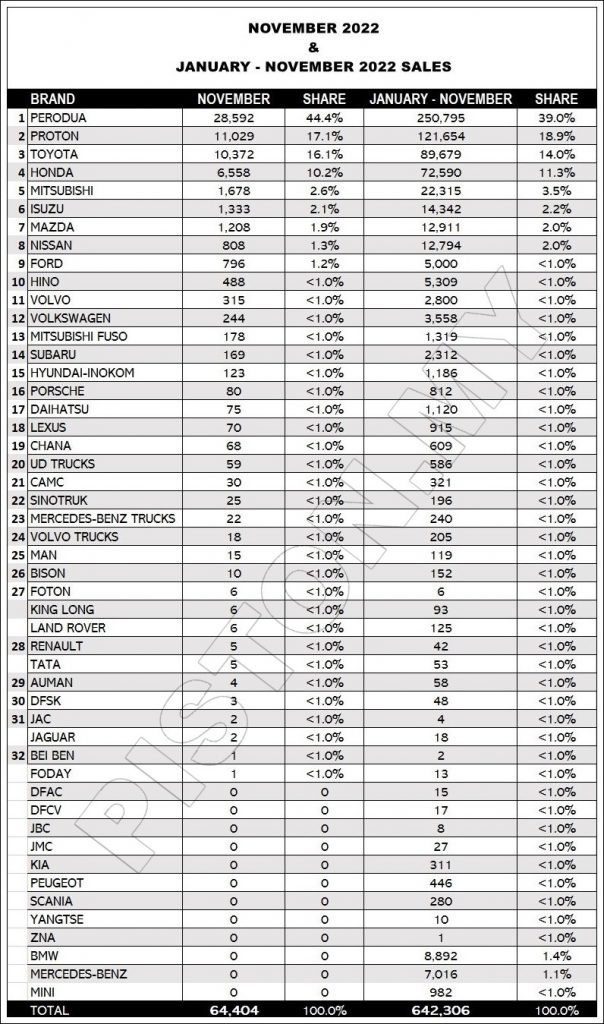
Note: BMW, Mercedes-Benz and MINI data is only provided quarterly so the cumulative volumes shown are only for January to September 2022.

In the early years of the automobile, just maintaining control of the car was the most important thing for the driver to do. Knowing how the engine was running and the speed were secondary. Over time, meters and warning lights were added to provide the driver with information that could help him drive better or alert him of problems. The increasing number of meters to display led to the creation of the instrument panel as an integral part of the dashboard, with the area in front of the driver being referred to as the ‘cockpit’, a term taken from aircraft.
In the past couple of decades, the instrument panel has evolved from having mechanical devices to digital graphic displays which allow more information to be shown by having changeable displays. Some information (eg energy flows in a hybrid powertrain) is also shown on the panel in the middle of the dashboard.
Looking at the instruments while driving means the eyes move down and the driver may not be watching the road ahead momentarily, which can be dangerous. One approach to helping the driver keep eyes ahead all the time was to take an idea from fighter aircraft – the Head-Up Display (HUD). This is a display projected on the windscreen ahead of the driver with information such as speed and other warnings.
(more…)Over the many years it has been in business, Lotus Engineering, the consultancy division of Lotus, has done work for many carmakers and in most cases, the scope of their work has been confidential. Of course, enthusiasts would know that vehicle dynamics is a speciality of the company so it’s not difficult to guess the areas that they would have been involved in.
There have been some models where the Lotus name has been associated with the product – like the Lotus Cortina, Lotus Sunbeam and Lotus Carlton/Omega. These were high-performance cars that were developed, engineered and manufactured in partnership with Ford, Talbot and GM, respectively.
(more…)Today’s driver assistance systems help the driver to be aware of dangerous situations as well as act autonomously to prevent accidents. These active safety systems use advanced and sophisticated sensor technology with radar and cameras scanning ahead and around the vehicle all the time.
But as the saying goes, it’s not speed that kills but rather the person behind the wheel. And the next step in driver assistance systems is to look inwards at the driver. Polestar is one of the companies that will be offering a driver monitoring technology by Smart Eye as standard in its Polestar 3 SUV.
(more…)When a huge asteroid smashed into our planet millions of years ago, it caused such great climate change that life on earth almost ended, particularly the dinosaurs. Climate change is also the reason why there is this urgency to switch to electric power for cars and stop using internal combustion (IC) engines which generate carbon dioxide (CO2), the culprit in global warming.
Unlike the death of the dinosaurs, the IC engines cannot just ‘die’ so fast, much as environmentalists would like them to. There are still more than 1.3 billion vehicles with IC engines on the planet, providing mobility to millions who won’t or can’t easily switch to electric vehicles (EVs). And all these vehicles require fuel to run… coincidentally derived from those dinosaurs which died. The combustion process that generates power for an engine also sends out CO2, so the solution has been to stop that process which should reduce the gas levels.
(more…)Crash tests have long been an important part of vehicle development. Apart from regulatory requirements which have become more stringent over the years, the carmakers themselves have also been improving the protection occupants are provided with as new technologies have become available.
Now, with the increasing number of electric vehicles (EVs), the manufacturers have also to take into consideration the presence of a high-voltage battery pack and many electrical systems. These too must be protected from damage in an accident.
(more…)© Copyright – Piston.my 2024 Trademarks belong to their respective owners. All rights reserved